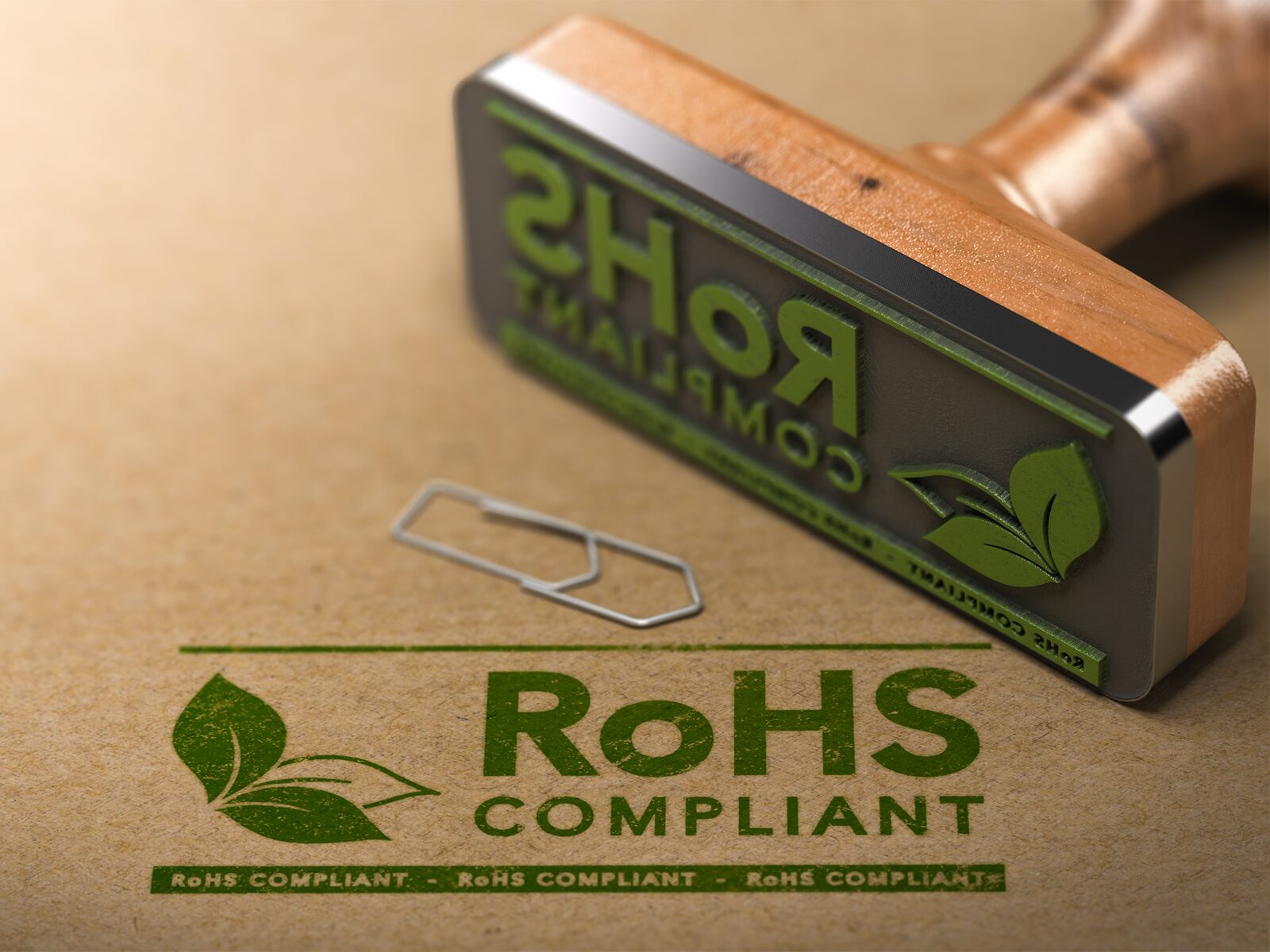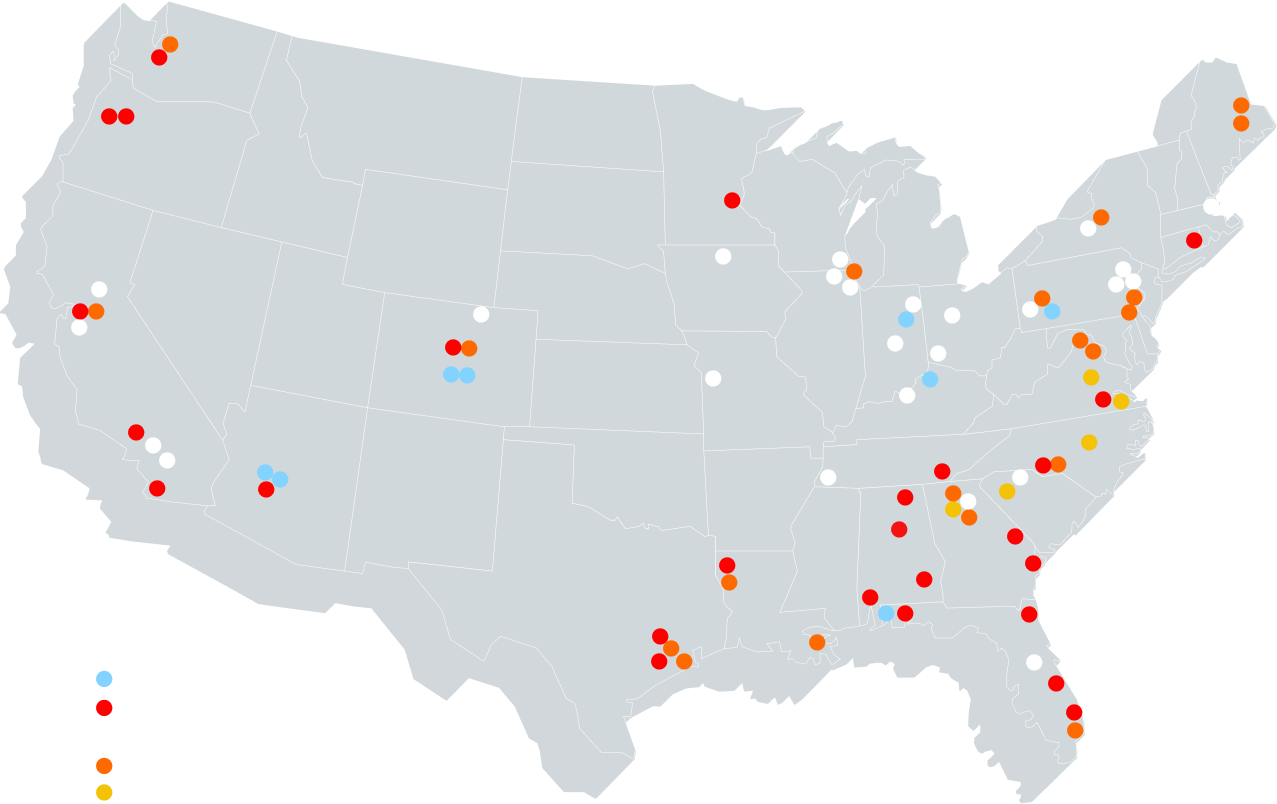Applied Technical Services performs RoHS Compliance Testing for clients selling electrical products in the EU. ATS uses various methods to help establish compliance with this hazardous substances regulation.
Recycling Electronics
People recycle electronics at remarkably low rates: an average of 20% worldwide. This hesitancy may come from security concerns, lack of awareness, or lack of motivation, but the lost opportunities are the same regardless of the reason. Many electronic appliances, like cell phones and laptops, can be recycled to reclaim useful component materials like copper, silver, and gold. Recovering these resources for future use can help the environment by lessening the demand for mining the above minerals, as well as the consumer by lowering the costs of production related to their devices.
While the benefits of recycling electronics are numerous, their component parts can also contain harmful substances such as lead and mercury. Not only do such contaminants harm the environment when improperly disposed of, but their inclusion in consumer products means they can harm people as well. These components make recycling electronics a more complicated matter, as their use is not desirable for future products either.
These competing factors led the European Union (EU) to adopt two measures designed to address both problems: The Waste Electrical and Electronic Equipment Directive (WEEE) and The Restriction of Hazardous Substances Directive (RoHS). The former encourages greater participation in electronic recycling efforts by setting goals for higher recycling rates across EU member nations, and the latter bans toxic substances from being included in the manufacturing of electronic products.
About RoHS
RoHS has gone through multiple iterations since it was created in 2002. The original version set down a list of six restricted materials, determined classes of regulated electronics, and charged affected companies with maintaining a series of records that illustrate their product(s)’ compliance. The second version, introduced in 2011, established new classes of affected electronics (now including medical devices), made non-compliance a criminal offense subject to punitive fines, designated the CE compliance marker as the official indicator of RoHS compliance, and extended compliance responsibilities to every phase of production and distribution. Finally, the third version adds four phthalates to the original list of restricted substances.
The List
The RoHS lists the following substances as being restricted for use in electronics sold in the EU:
- Cr VI (Hexavalent Chromium)
- Hg (Mercury)
- Cd (Cadmium)
- Pb (Lead)
- PBDE (Polybrominated Diphenyl Ethers)
- PBB (Polybrominated Biphenyls)
- DIBP (Diisobutyl Phthalate)
- DBP (Dibutyl Phthalate)
- BBP (Benzyl Butyl Phthalate)
- DEHP (Bis(2-Ethylhexyl) phthalate)
Restricted Substance Limits
There are thresholds dictating how much of a restricted substance can be included in a product. Each of the substances on the list must make up less than 1,000 parts-per-million (ppm), except for Cadmium, which must make up less than 100 ppm. These thresholds do not pertain to the whole of the product but instead govern the makeup of each component that can be mechanically separated from the whole of the product.
To illustrate, the screws holding together a radio must have less than 0.1% of each listed analyte/compound. Once each of its mechanically separable components has been individually found to uphold RoHS compliance, then the entire product is judged to be fit for sale in the EU.
These standards apply to all electronic products sold in the EU and present a source of consternation to multi-national companies with sales across the world, where many markets have less-stringent consumer product regulations.
ATS To the Rescue
If these regulations sound like they set high standards, they do. Fortunately, ATS provides comprehensive RoHS testing services. From casings to chips to cords to circuits, we test all requested product components for RoHS compliance.
About Our RoHS Compliance Testing Methods
We perform multiple methods of testing depending on what class of hazardous substance our chemists are looking for within the client sample.
ICP-AES
The metals — lead, mercury, cadmium, and hexavalent chromium — are found through a method called Inductively Coupled Plasma-Atomic Emission Spectroscopy (ICP-AES), performed to standard ASTM E1479. This method is destructive, in that it analyzes liquid samples; therefore, the chemists must chemically break the sample material down into a liquid before they can study it.
Once the sample is prepared, our equipment superheats the material with plasma to separate and measure its chemical components. Our ICP-AES chamber is a precise enough tool to detect individual compounds at the parts-per-million (ppm) level — a threshold much lower than the one mandated by RoHS. Our lab is ISO 17025:2017-accredited to perform RoHS testing to this specification.
GC-MS
The other compounds — brominated flame retardants (PBB and PDBE) and phthalates (DEHP, BBP, DBP, and DIBP) — are measured using a different method called Gas-Chromatography/Mass-Spectroscopy (GC-MS), performed to standards CPSC-CH-C1001-09.4, EPA 3545A, and EPA 8270D.
This method measures both the presence and quantity of specified chemicals, although it may also be used to identify an unknown compound. Because of the precision inherent to this detection method, as well as the quality of our lab’s equipment, we can measure compounds of interest at the parts-per-billion level. ATS is also accredited to perform phthalate testing in accordance with CPSC-CH-C1001-09.4.
About ATS
ATS has delivered testing, inspection, and engineering consulting services of peerless quality for over 55 years. We proudly serve clients from a variety of industries. Our expert chemists return accurate results quickly because of their familiarity with the applicable testing methods. We can help you navigate the waters of maintaining RoHS compliance, as tricky as they are – ATS takes a closer look.



